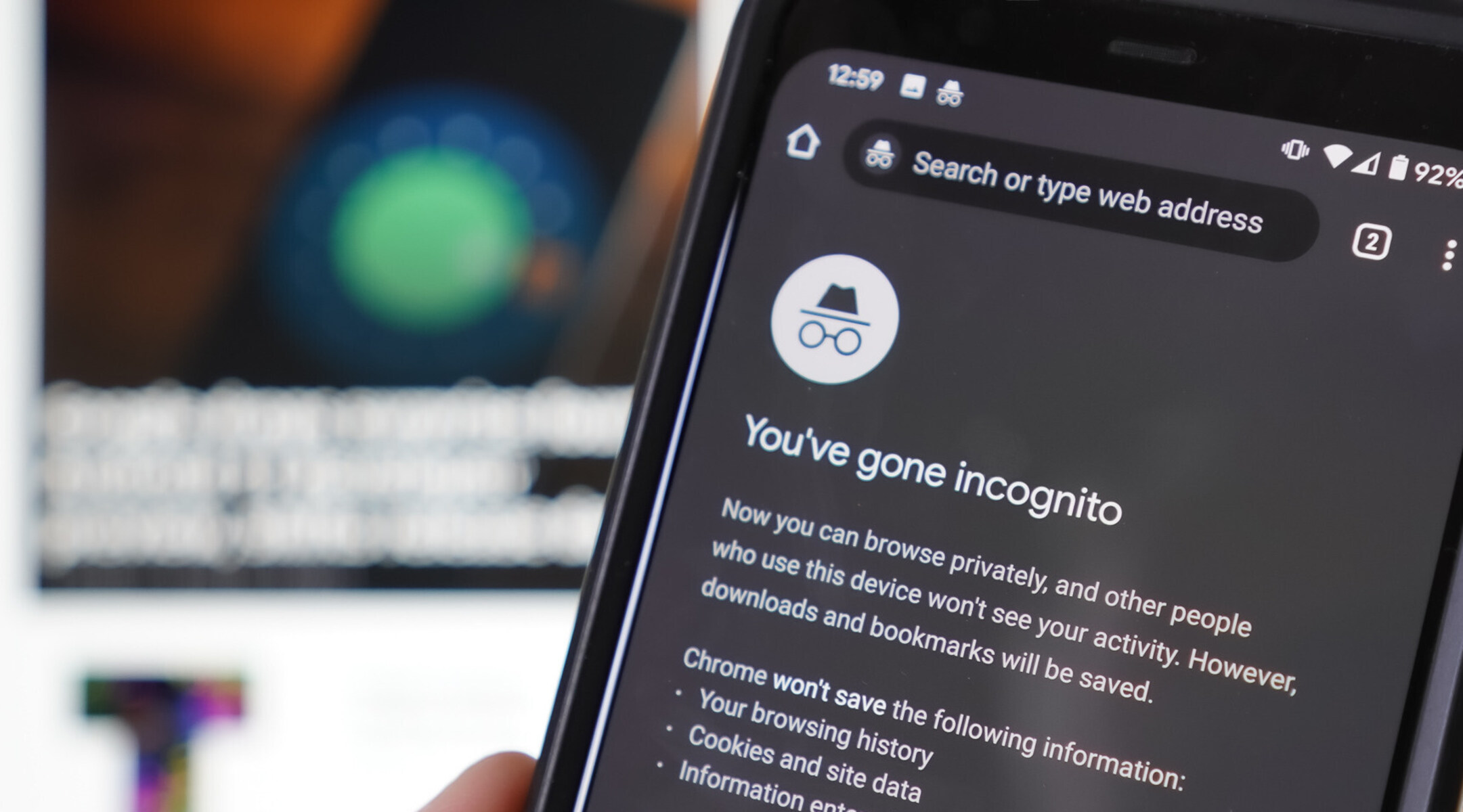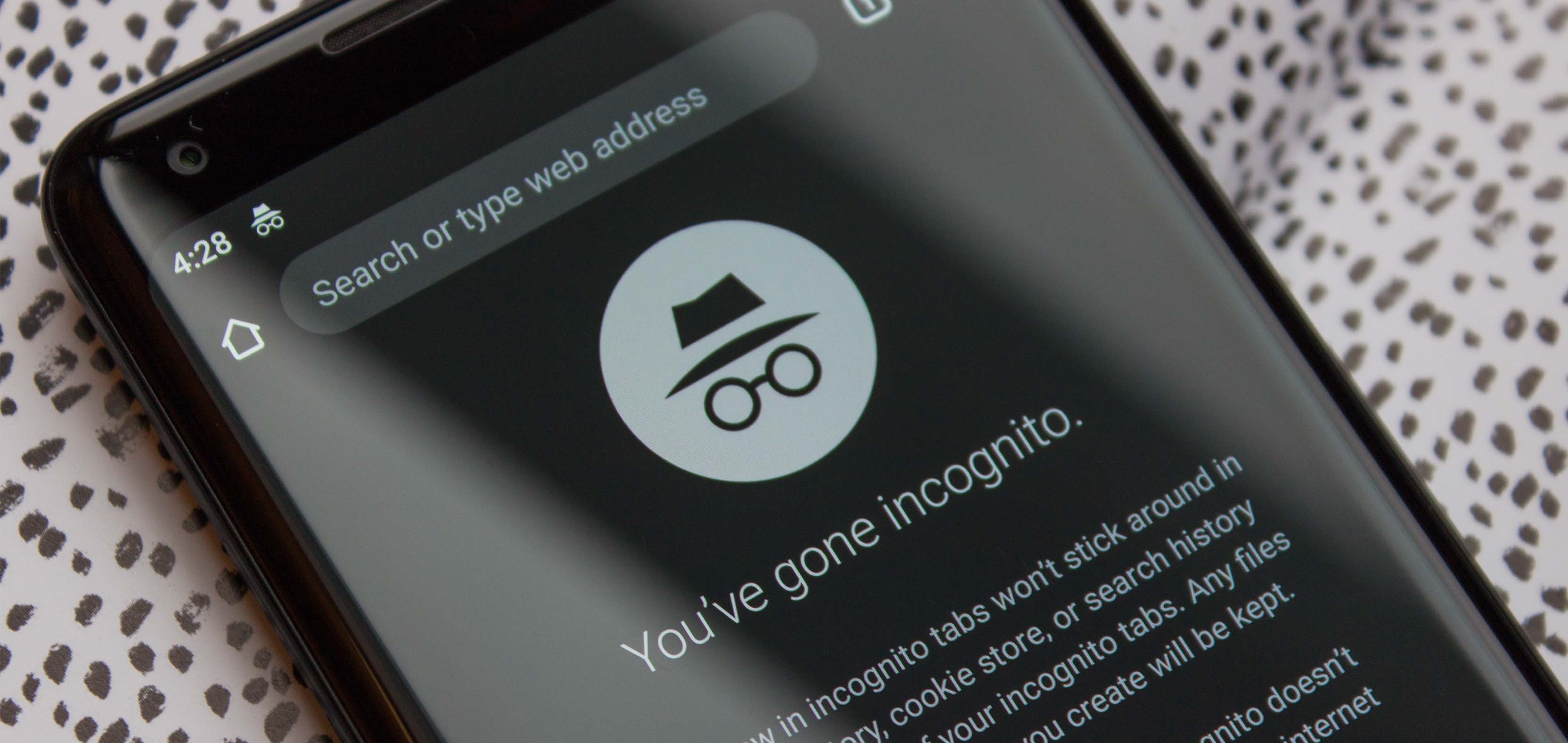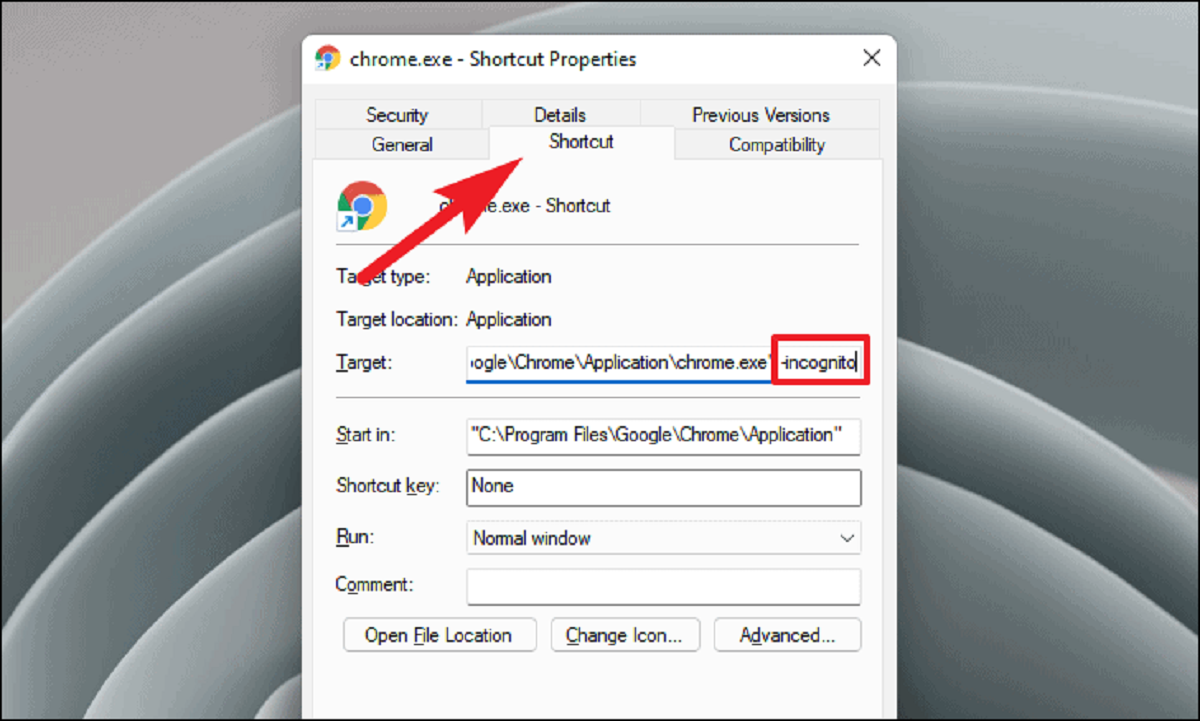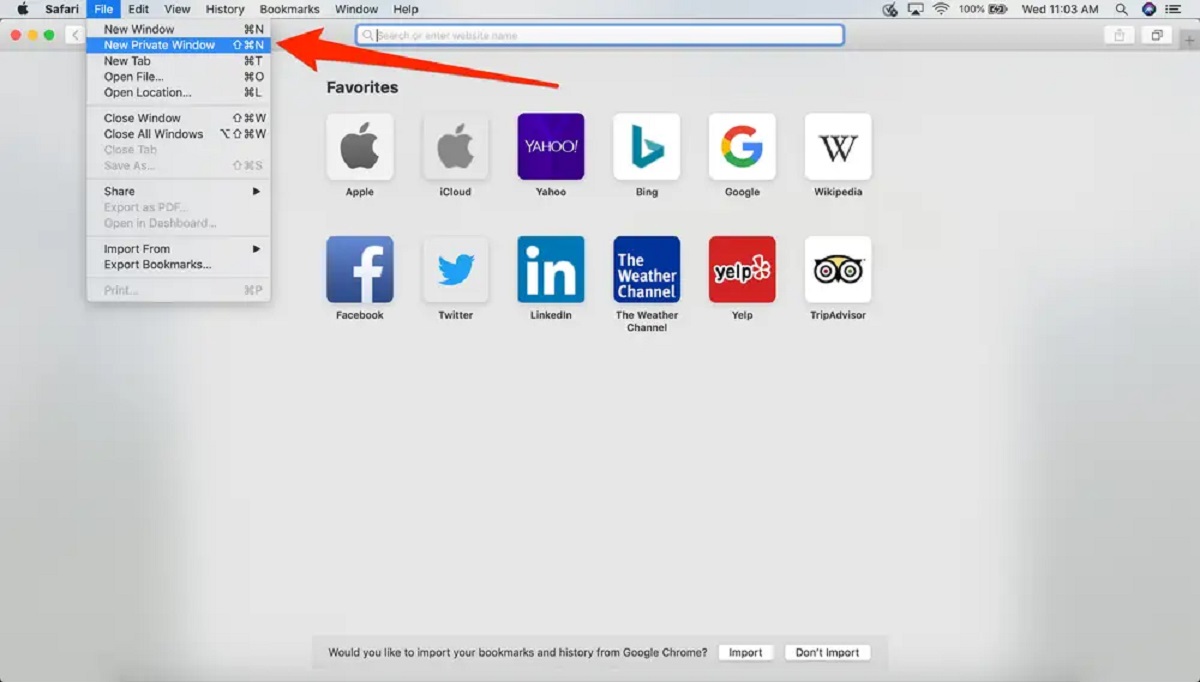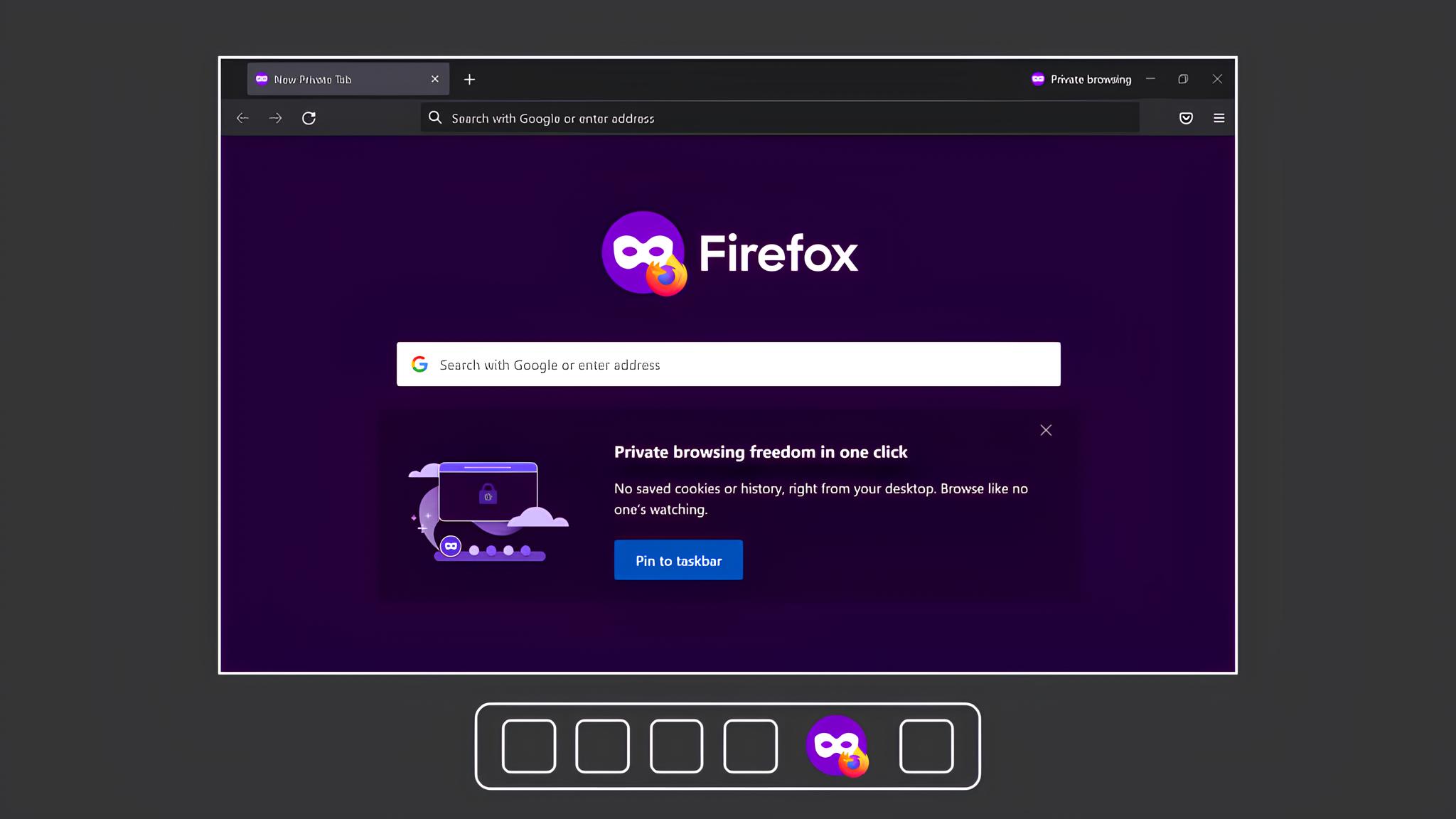Introduction
Have you ever found yourself in a situation where you need to disable the incognito mode on your web browser? Whether it's for parental control, monitoring employee activity, or troubleshooting technical issues, knowing how to take a browser off incognito mode can be a valuable skill. Incognito mode, also known as private browsing or privacy mode, allows users to browse the web without leaving a trace of their online activity on the device. While this feature offers privacy and discretion, there are instances where it becomes necessary to disable it.
In this comprehensive guide, we will explore the step-by-step process of disabling incognito mode on popular web browsers such as Google Chrome, Safari, Microsoft Edge, and Mozilla Firefox. By understanding the specific procedures for each browser, you will gain the knowledge and confidence to manage incognito mode settings effectively. Whether you're a concerned parent, an IT administrator, or an individual seeking to customize their browsing experience, this guide will equip you with the necessary insights to take control of incognito mode.
Let's embark on this journey to uncover the methods for disabling incognito mode across different browsers, empowering you to navigate the digital realm with enhanced control and awareness.
Understanding Incognito Mode
Incognito mode, also referred to as private browsing or privacy mode, is a feature available in most modern web browsers. When activated, this mode allows users to browse the internet without the browser recording their history, storing cookies, or retaining temporary internet files. Essentially, it enables individuals to explore the web without leaving behind a digital footprint on the device they are using.
One of the primary benefits of incognito mode is its ability to enhance privacy and discretion. It is particularly useful when users wish to access websites without the browser retaining any information about their online activity. This can be advantageous in scenarios where individuals share a device with others and want to maintain confidentiality regarding their browsing habits.
Moreover, incognito mode can be valuable for conducting research or accessing content without affecting personalized recommendations or search history. By preventing the accumulation of browsing data, users can explore topics without influencing their regular browsing experience.
It's important to note that while incognito mode offers a level of privacy, it does not make users completely anonymous or invisible online. Internet service providers, employers, and website operators may still have visibility into the user's online activity. Additionally, downloads and bookmarks made during incognito sessions are retained after exiting this mode.
Understanding the functionality and limitations of incognito mode is crucial for effectively managing browsing activities. Whether it's for maintaining privacy, troubleshooting browser issues, or implementing parental controls, having a clear grasp of how incognito mode operates empowers users to make informed decisions about their online behavior.
In the following sections, we will delve into the specific steps for disabling incognito mode on popular web browsers, providing you with the knowledge and tools to take control of your browsing experience.
Disabling Incognito Mode on Google Chrome
Disabling incognito mode on Google Chrome involves adjusting the browser settings to restrict the use of this private browsing feature. Whether you're a parent seeking to monitor your child's online activities or an organization aiming to enforce browsing policies, understanding how to disable incognito mode on Chrome is essential.
Here's a step-by-step guide to disabling incognito mode on Google Chrome:
-
Accessing Chrome Policies: Google Chrome allows administrators to manage browser settings through the use of policies. To begin, open the Chrome browser and type "chrome://policy" in the address bar, then press Enter. This will direct you to the Chrome Policies page where you can modify various browser settings.
-
Locating Incognito Mode Policy: On the Chrome Policies page, scroll down or use the search function to find the "IncognitoModeAvailability" policy. This policy controls the availability of incognito mode in the browser.
-
Modifying Incognito Mode Policy: Click on the "IncognitoModeAvailability" policy to modify its settings. By default, the policy is set to "Enabled" or "Default." To disable incognito mode, change the setting to "Disabled." This action will prevent users from opening new incognito windows or tabs in Google Chrome.
-
Applying Policy Changes: After adjusting the "IncognitoModeAvailability" policy, click on the "Reload Policies" button to apply the changes. This ensures that the modified policy settings take effect in the Chrome browser.
By following these steps, you can effectively disable incognito mode on Google Chrome, thereby exerting control over private browsing activities within the browser.
It's important to note that the ability to manage Chrome policies may require administrative privileges, making this method suitable for organizations, educational institutions, or individuals with the necessary access rights. For personal devices, alternative methods such as using third-party extensions or parental control software can be explored to achieve similar outcomes.
By understanding the process of disabling incognito mode on Google Chrome, you can tailor the browsing experience to align with specific requirements, whether it involves promoting responsible internet usage or implementing organizational policies.
Next, let's explore the steps for disabling private browsing on Safari, further expanding your knowledge of managing browsing modes across different web browsers.
Disabling Private Browsing on Safari
Disabling private browsing, also known as Incognito mode, on Safari is a straightforward process that involves adjusting the browser settings to restrict the use of this privacy feature. Whether it's for parental control, monitoring employee activity, or enforcing browsing policies, understanding how to disable private browsing on Safari is essential for maintaining oversight of online activities.
Here's a step-by-step guide to disabling private browsing on Safari:
-
Accessing Safari Preferences: Begin by opening the Safari browser on your Mac or iOS device. In the top menu bar, click on "Safari" and select "Preferences" from the dropdown menu. This will open the Safari Preferences window, allowing you to customize various browser settings.
-
Selecting Security Settings: Within the Safari Preferences window, navigate to the "Privacy" tab. This section contains settings related to website tracking, cookies, and other privacy features. To disable private browsing, ensure that the "Prevent cross-site tracking" and "Block all cookies" options are unchecked. These settings can impact the functionality of private browsing mode.
-
Disabling Private Browsing Mode: To prevent users from accessing private browsing mode, go to the "General" tab within Safari Preferences. Here, you will find the option to set a new window or tab to open with a specific homepage. By selecting this option and entering a preferred homepage URL, you can effectively disable the ability to open a private browsing window or tab directly.
By following these steps, you can effectively disable private browsing mode on Safari, thereby exerting control over the privacy features within the browser.
It's important to note that the process of disabling private browsing on Safari may vary slightly based on the version of the browser and the operating system. Additionally, the ability to manage these settings may require administrative privileges on shared devices or within organizational environments.
Understanding how to disable private browsing on Safari empowers individuals and administrators to customize the browsing experience according to specific requirements, whether it involves promoting responsible internet usage, ensuring compliance with organizational policies, or maintaining a secure browsing environment.
Next, let's explore the steps for turning off InPrivate browsing on Microsoft Edge, further expanding your knowledge of managing private browsing modes across different web browsers.
Turning Off InPrivate Browsing on Microsoft Edge
Disabling InPrivate browsing, the equivalent of incognito mode in Microsoft Edge, is a valuable capability for individuals and organizations seeking to manage browsing activities and enforce browsing policies. By understanding how to turn off InPrivate browsing on Microsoft Edge, users can exercise greater control over online privacy and browsing behavior.
Here's a detailed guide to turning off InPrivate browsing on Microsoft Edge:
-
Accessing Edge Settings: Begin by opening the Microsoft Edge browser on your Windows or macOS device. In the top-right corner of the browser window, click on the three horizontal dots to access the "Settings" menu.
-
Navigating to Privacy, Search, and Services: Within the Settings menu, select "Privacy, search, and services" from the list of options. This section contains a range of privacy-related settings, including those related to InPrivate browsing.
-
Managing InPrivate Browsing Settings: Scroll down to the "Security" section within the Privacy, Search, and Services menu. Here, you will find the option to manage the InPrivate browsing setting. By toggling the switch to the "Off" position, you can effectively disable the InPrivate browsing feature in Microsoft Edge.
-
Confirming Changes: After turning off InPrivate browsing, it's advisable to close and reopen the Microsoft Edge browser to ensure that the changes take effect. This step helps to verify that the InPrivate browsing mode is successfully disabled.
By following these steps, users can effectively disable InPrivate browsing on Microsoft Edge, thereby exerting control over private browsing activities within the browser.
It's important to note that the process of turning off InPrivate browsing on Microsoft Edge may vary slightly based on the version of the browser and the operating system. Additionally, the ability to manage these settings may require administrative privileges, particularly in organizational or shared device environments.
Understanding how to disable InPrivate browsing on Microsoft Edge empowers individuals and administrators to customize the browsing experience according to specific requirements. Whether it involves promoting responsible internet usage, ensuring compliance with organizational policies, or maintaining a secure browsing environment, having the knowledge to manage InPrivate browsing settings is invaluable.
Next, let's explore the steps for disabling private window mode on Mozilla Firefox, further expanding your knowledge of managing private browsing modes across different web browsers.
Disabling Private Window on Mozilla Firefox
Disabling the private window mode on Mozilla Firefox is a fundamental aspect of managing browsing activities and ensuring compliance with specific browsing policies. Whether it's for parental control, organizational requirements, or maintaining a secure browsing environment, understanding how to disable the private window feature in Firefox is essential.
Here's a comprehensive guide to disabling private window mode on Mozilla Firefox:
-
Accessing Firefox Options: Begin by opening the Mozilla Firefox browser on your Windows, macOS, or Linux device. In the top-right corner of the browser window, click on the three horizontal lines to access the main menu. From the dropdown menu, select "Options" to proceed to the Firefox settings.
-
Navigating to Privacy & Security Settings: Within the Firefox Options menu, navigate to the "Privacy & Security" tab located on the left-hand side. This section contains a range of privacy and security-related settings, including those related to private browsing.
-
Disabling Private Window Mode: Scroll down to the "History" section within the Privacy & Security tab. Here, you will find the option to manage the settings for Firefox's private browsing mode. To disable the private window feature, uncheck the box next to "Always use private browsing mode." This action effectively turns off the default private browsing mode in Firefox.
-
Confirming Changes: After disabling the private window mode, it's advisable to close and reopen the Mozilla Firefox browser to ensure that the changes take effect. This step helps to verify that the private browsing mode is successfully disabled.
By following these steps, users can effectively disable the private window mode on Mozilla Firefox, thereby exerting control over private browsing activities within the browser.
It's important to note that the process of disabling private window mode on Mozilla Firefox may vary slightly based on the version of the browser and the operating system. Additionally, the ability to manage these settings may require administrative privileges, particularly in organizational or shared device environments.
Understanding how to disable the private window mode on Mozilla Firefox empowers individuals and administrators to customize the browsing experience according to specific requirements. Whether it involves promoting responsible internet usage, ensuring compliance with organizational policies, or maintaining a secure browsing environment, having the knowledge to manage private browsing settings is invaluable.
Next, let's explore the steps for disabling private browsing mode on other popular web browsers, further expanding your knowledge of managing private browsing modes across different platforms.
Conclusion
In conclusion, understanding how to take a browser off incognito mode is a valuable skill that empowers individuals, parents, and organizations to manage browsing activities effectively. By exploring the step-by-step processes for disabling incognito mode on popular web browsers such as Google Chrome, Safari, Microsoft Edge, and Mozilla Firefox, users can gain a comprehensive understanding of managing private browsing modes.
Disabling incognito mode involves adjusting browser settings to restrict the use of private browsing features. In Google Chrome, administrators can utilize Chrome Policies to control the availability of incognito mode, while Safari users can customize preferences to prevent private browsing. Similarly, Microsoft Edge offers settings to manage InPrivate browsing, and Mozilla Firefox provides options to disable the private window mode.
By mastering these techniques, individuals and administrators can tailor the browsing experience to align with specific requirements, whether it involves promoting responsible internet usage, ensuring compliance with organizational policies, or maintaining a secure browsing environment. Furthermore, the ability to disable incognito mode can be particularly beneficial for parents seeking to monitor their children's online activities and organizations aiming to enforce browsing policies within their networks.
It's important to note that while disabling incognito mode can serve various purposes, it's essential to approach this capability with a balanced perspective. Respecting privacy and promoting responsible internet usage should be at the forefront of managing browsing activities. Additionally, open communication and education about online behavior are crucial components of fostering a healthy digital environment.
As technology continues to evolve, the ability to manage browsing modes and privacy features will remain an important aspect of digital literacy. By staying informed about browser settings and privacy controls, individuals can navigate the digital landscape with confidence and awareness.
In essence, the knowledge and techniques shared in this guide empower users to take control of their browsing experience, ensuring that privacy, security, and responsible internet usage are upheld. Whether it's for personal use, parental guidance, or organizational governance, the ability to disable incognito mode equips individuals with the tools to navigate the digital realm with intention and mindfulness.







